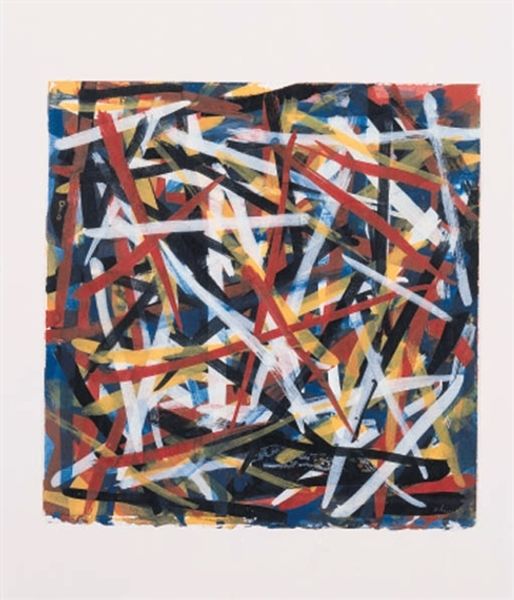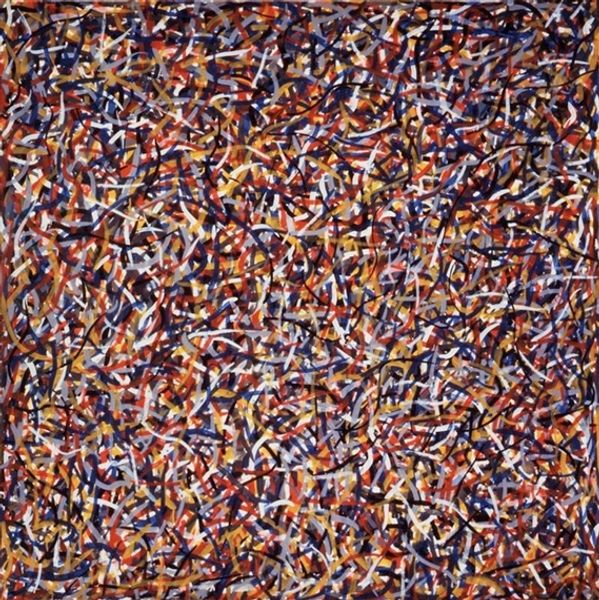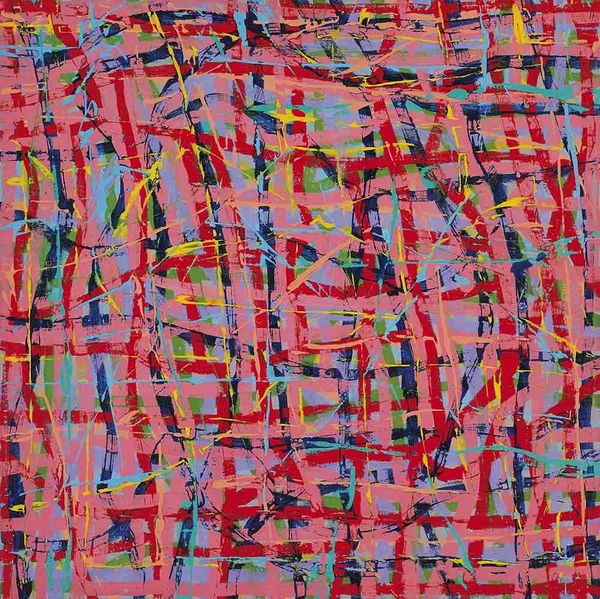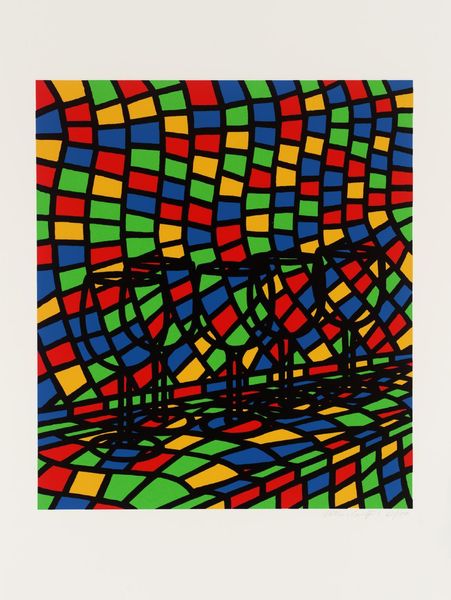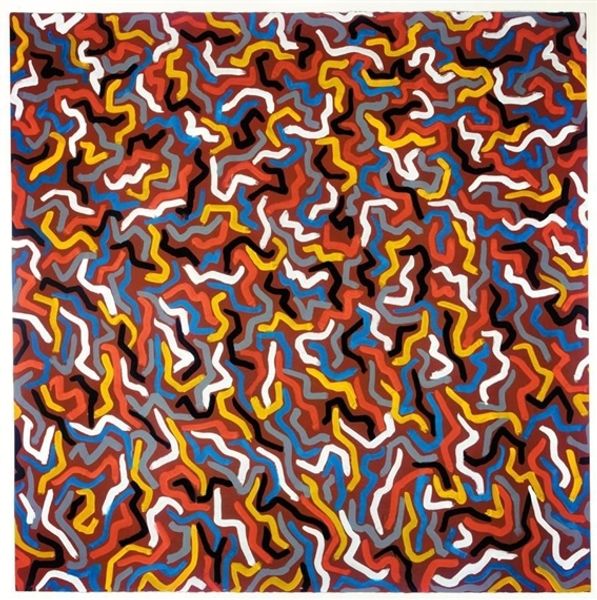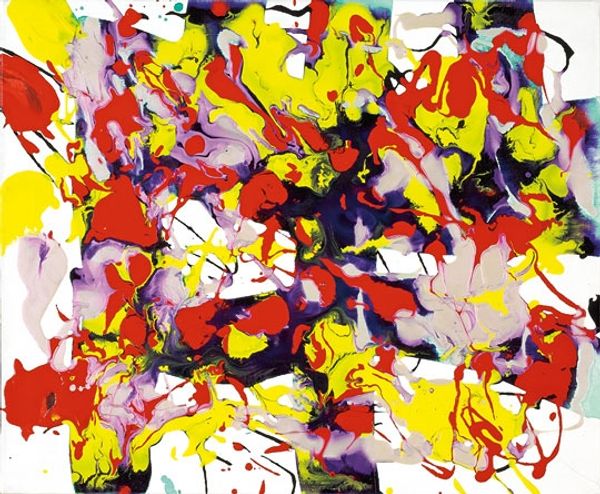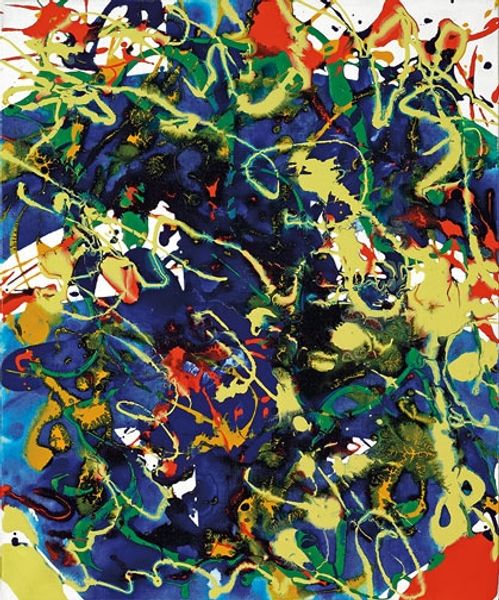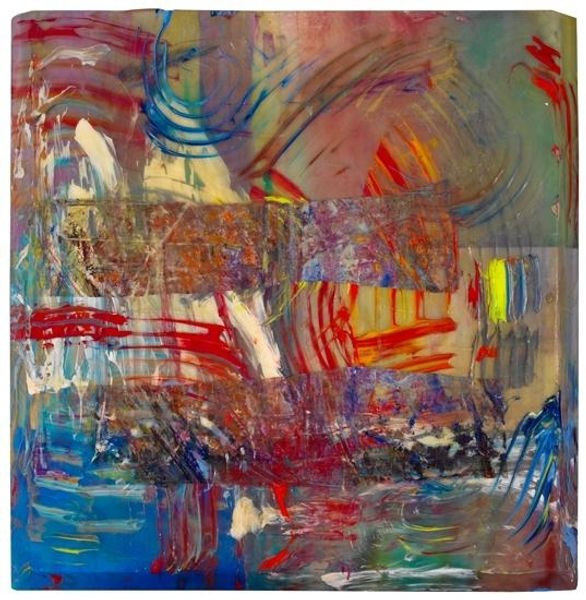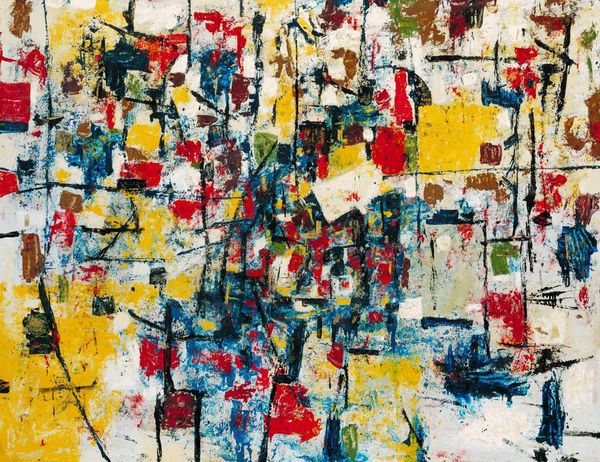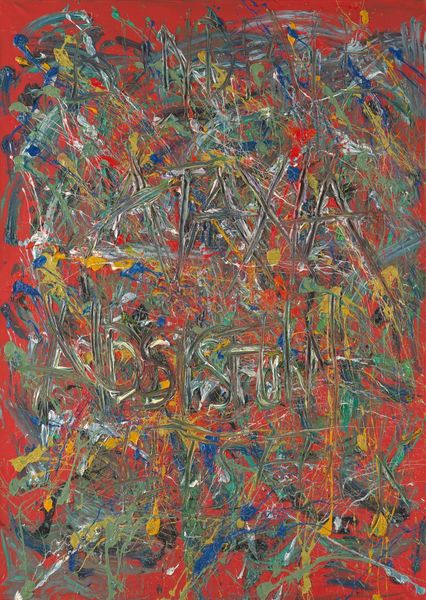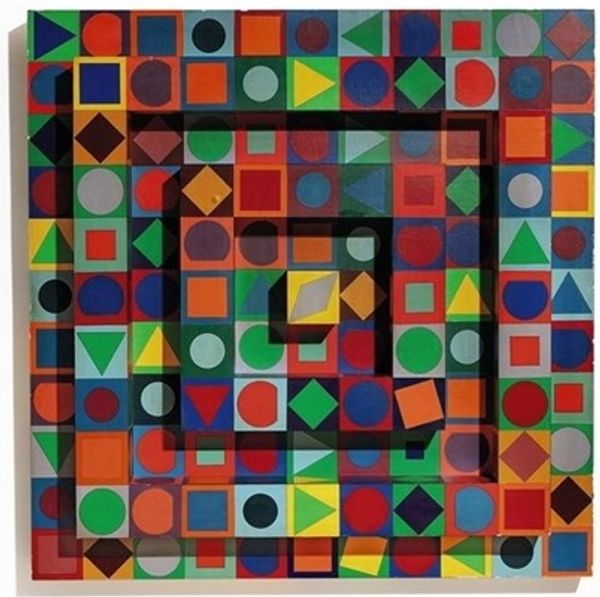
painting, acrylic-paint
#
conceptual-art
#
painting
#
minimalism
#
acrylic-paint
#
geometric pattern
#
abstract pattern
#
geometric
#
geometric-abstraction
#
abstraction
#
line
Copyright: Sol LeWitt,Fair Use
Curator: At first glance, this looks almost chaotic, a jumble of colorful lines. Editor: Indeed. We're looking at Sol LeWitt's "Irregular Vertical and Horizontal Bands of Color Superimposed," created in 1993 with acrylic paint. It certainly evokes a sense of energetic disorder. What’s your read on it, in terms of historical context? Curator: LeWitt, though considered a minimalist and conceptual artist, departed here from rigid geometric forms. He explored systems, but allowed for improvisation within them, defying, to a certain degree, the cool detachment often associated with Minimalism. Editor: The visible brushstrokes give the work a decidedly human quality, contrasting the stark anonymity often favored by his peers. How does the color palette strike you? The reds, yellows, blues—they have a almost childlike exuberance. Curator: Absolutely. Color played a crucial role in LeWitt's later work. The bright, seemingly haphazard arrangement masks a deeper structural logic. It speaks, perhaps, to a loosening of social norms that permeated the late 20th century—an embrace of the irregular, a push against the grid. Editor: So, it reflects social attitudes? This piece might resonate with those seeking liberation from restrictive systems and an embracing of the messiness and beauty of divergence and even disorganization. It celebrates that sometimes the most profound order is in the disorder. Curator: I concur. The legacy of "Irregular Vertical and Horizontal Bands of Color Superimposed" lies in its ability to question established artistic boundaries. The museum gives itself to this tension, questioning the role that the artist’s intention plays versus the audience's interpretation, pushing both to explore these dialogues with a new understanding. Editor: LeWitt gives permission for imperfections. With each gaze, the lines become both simpler and more layered in our minds, like seeing possibilities for ourselves. Curator: It really causes you to reflect on whether those choices made within self-constructed barriers cause you to rise, remain, or fall in place.
Comments
No comments
Be the first to comment and join the conversation on the ultimate creative platform.
